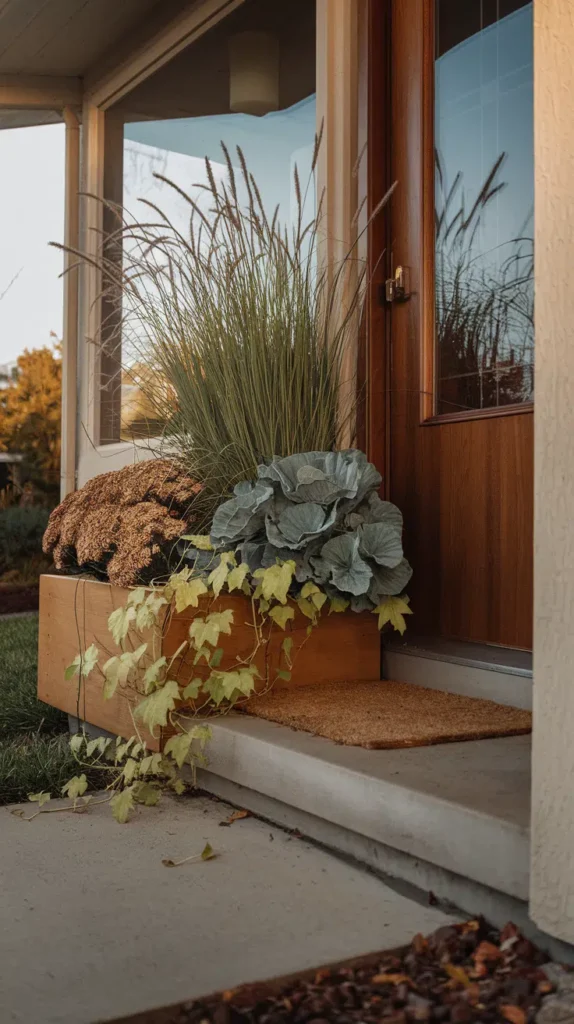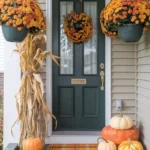Discover how Front Porch Fall Planters can elevate your home’s curb appeal this season. Dive into creative ideas for a stunning entry. Read more to transform your space!
Discover how Front Porch Fall Planters can make your home’s entrance look even prettier this season. Explore fun ideas to make your doorstep really special. Find out more to change your space!
Your entryway is ready for a little update. Not a full makeover. Just a small, meaningful change.
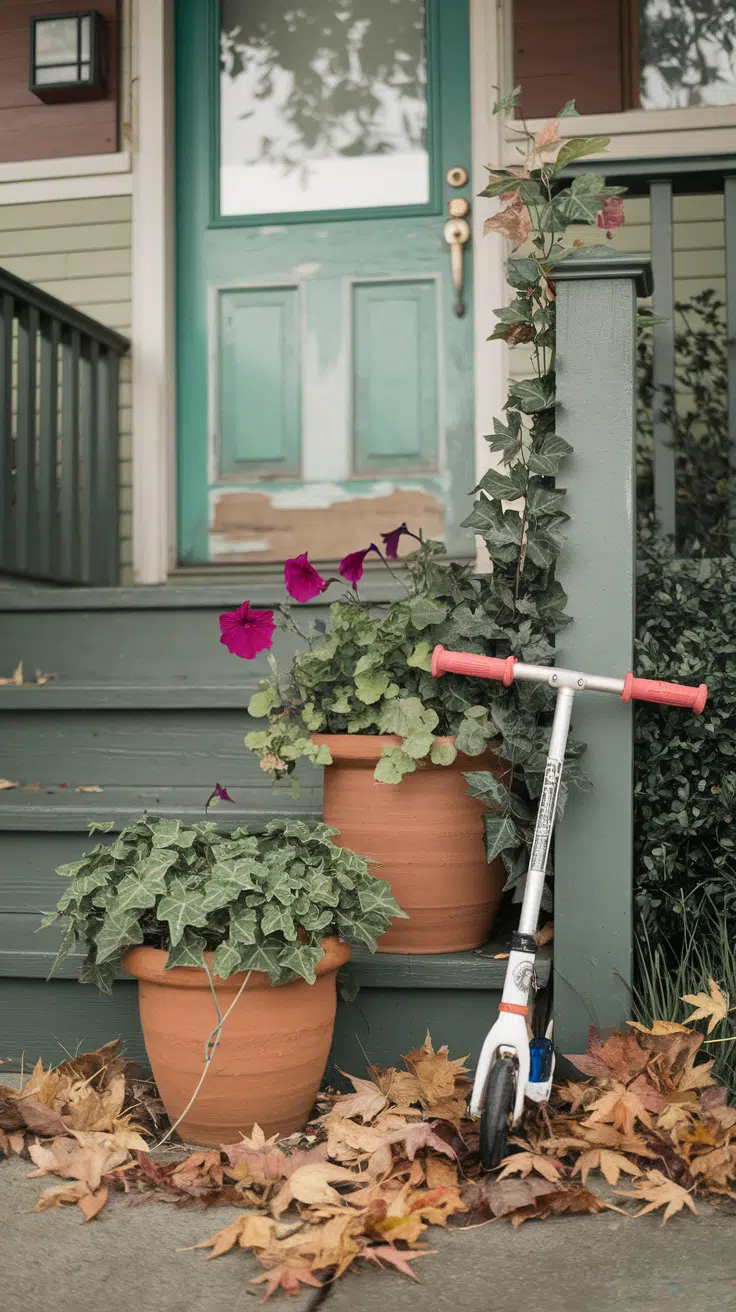
The First Whisper of Fall
Is your doorway ready for fall, or does it still feel like summer? Your door is where visitors stop first and where you say hello to each new day. Let it show the changing season.
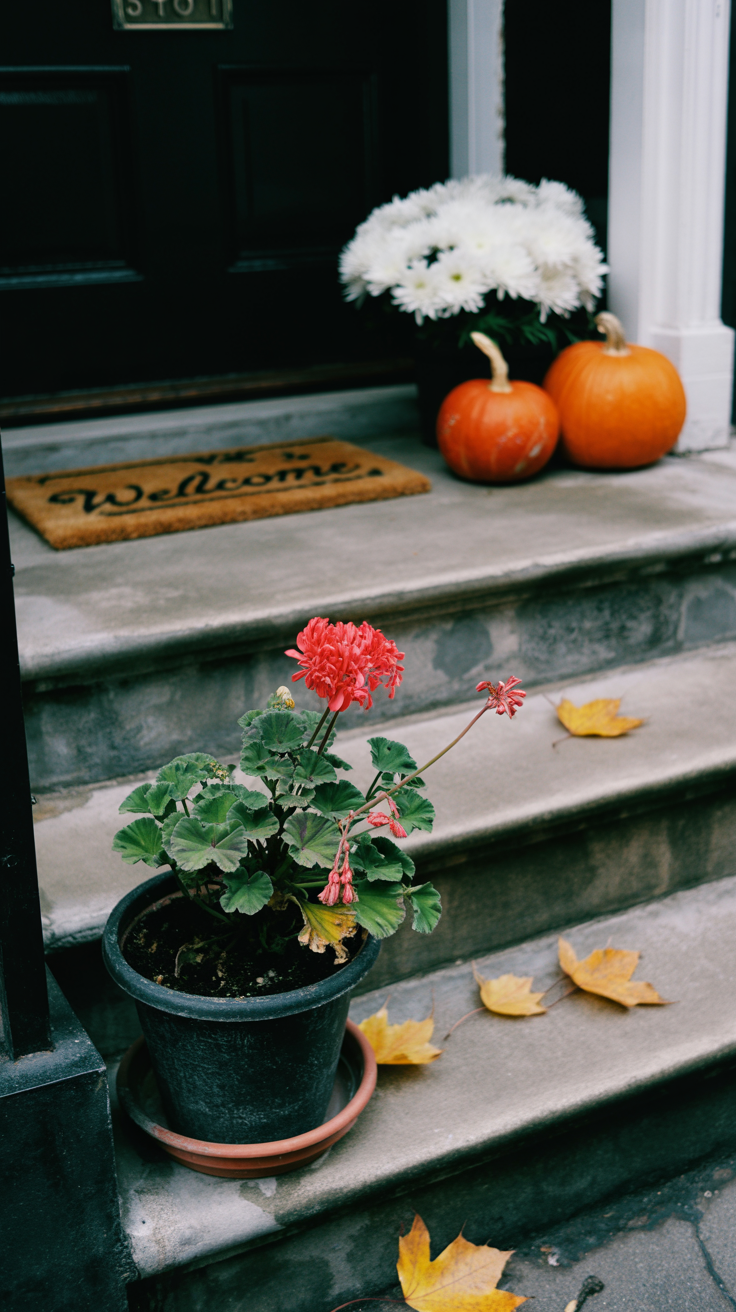
You don’t have to just put one plant by the door. You can make people feel things with different plants and surfaces. You can make the entrance feel like a friendly greeting. And you can do all this without spending a lot of money or using fancy tools.
Let’s create plant arrangements that feel like home and match the season. We’ll use more than just the usual ideas, adding colors, shapes, and little treasures we find. Our front porch will have fall planters that tell a warm and welcoming story right from the start.

The Core Ethos — Capturing the Soul of Autumn in a Pot
Creating fall planters is more than just changing plants. It’s like telling a story with a feeling. Imagine coziness, like a big harvest with lots of personality. Use plants that stay nice for a longer time, not just the ones that bloom fast. Use textures and pick colors that feel rich and warm.

Harvest & Abundance
Fall is all about feeling full and cozy. Imagine your pots looking like a neat, modern version of a cornucopia, full of goodies. Use lots of different shapes and sizes to show there’s plenty. Tall grasses, fluffy flowers, bumpy leaves, and little hanging plants add layers. Using odd numbers makes everything look more natural. Leave small spaces so each plant has room to grow.
You can add cut stems or seeds to make it look fuller. Things like dried millet, wheat, or broomcorn are good for this. You can also put small pumpkins in the soil for parties, and take them out later when you need to water.
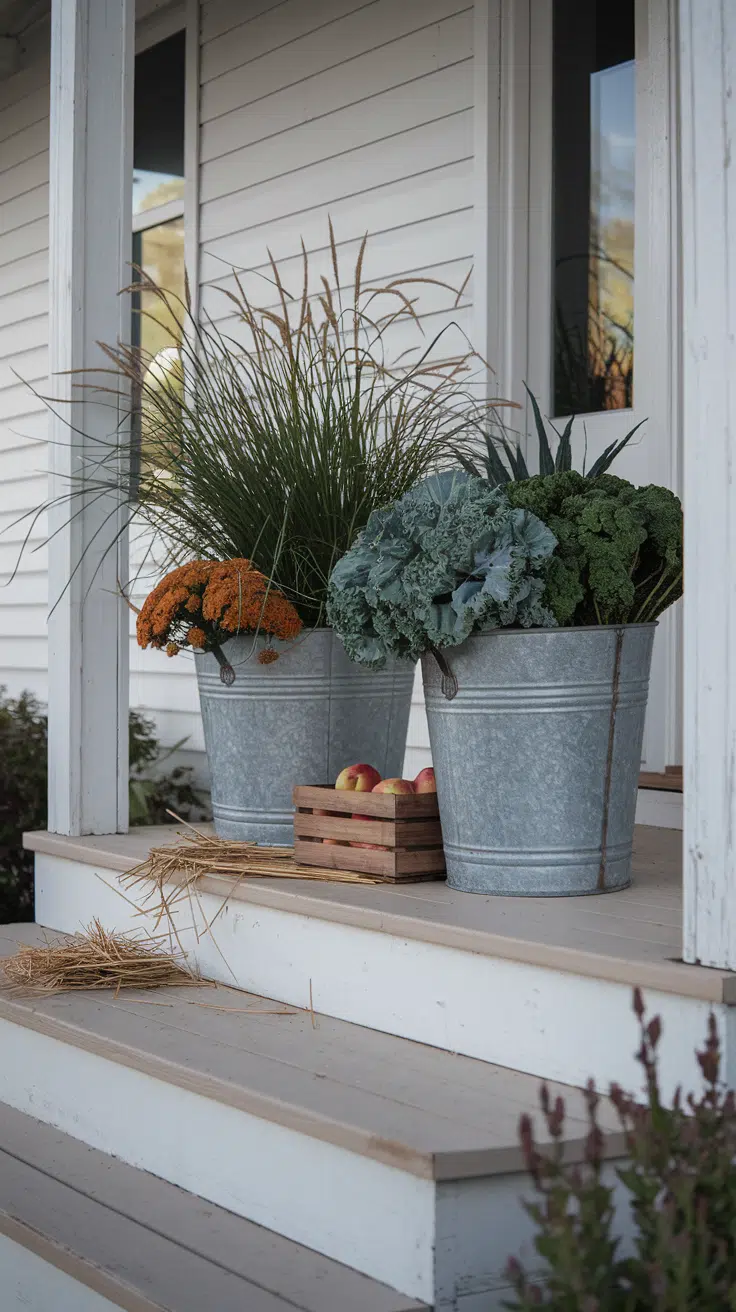
Warmth & Sanctuary
As nights get chillier, your home feels like a big hug. Your pots can feel that way too. Pick warm colors like orange, red, and gold. Shiny metals like copper and bronze can make them glow. Wooden pots or big barrels add a snug feeling. Touch is important too: think of soft grasses, velvety leaves, rough bark, and smooth pumpkins.
You can add little lights to make your plants sparkle at night. Fairy lights or a tiny solar light work really well. Keep the lights soft and gentle, so it feels warm and friendly, not too bright.

Accepting Imperfect, Lasting Beauty
In fall, things can look tough but interesting. It’s not just about pretty flower petals. Strong branches, seed pods, bark, and thick leaves stay nice for longer than blossoms. A pot with a little chip, a terracotta pot with white marks, or a twig with lichen add a special touch.
Let the plants that stay nice for a long time take the spotlight. Grasses keep their form. Kale turns prettier colors when it gets cooler at night. Dried hydrangeas keep their shape for many weeks. Even a few seed heads from coneflowers can help feed birds and keep your garden interesting.
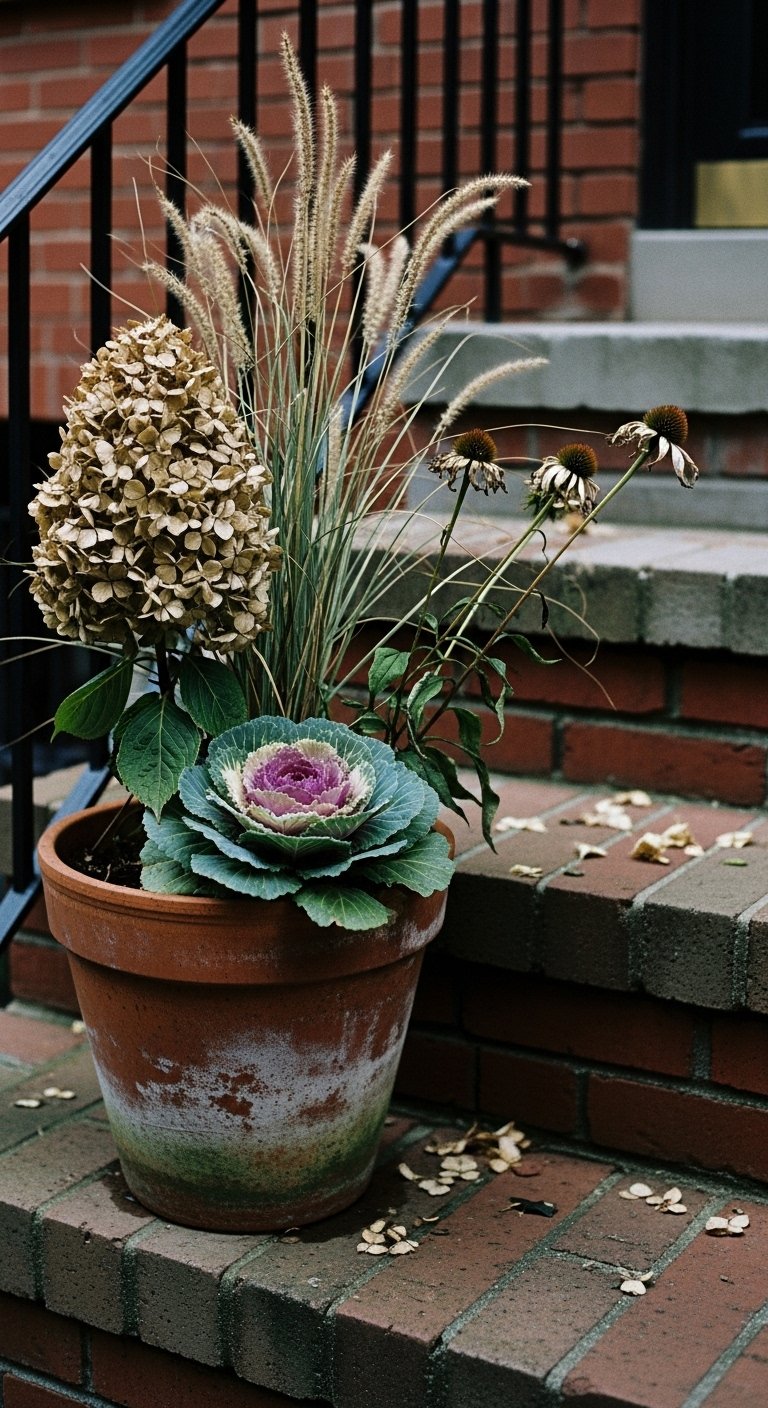
The “Thriller, Filler, Spiller” Strategy — Your Reliable Design Blueprint
To make a strong planter, just follow this simple plan: put a tall plant for height, a bushy one for fullness, and a hanging one for softness. That’s all you need. This makes your pot look balanced and neat. It works for big pots, medium tubs, or even little steps on your porch.
We’ll match plants so your setup stays nice and looks finished right from the start.
Introduction to the Concept
Imagine your pot like a triangle. Put the tall plant at the back or in the center. The middle has round, bushy plants. Let some plants hang over the edge. This way, everything looks nice and balanced. Big pots need bigger plants so they look full. Smaller spots, like steps, need smaller, neat plants to look just right.
Pick a pot with holes at the bottom so water can get out. Use fresh soil, pour in plenty of water after you plant, and make sure there’s room for the roots to grow.

The “Thriller” — Height and Drama
Think of the tall plant as the leader, making everyone look up. It’s best to choose one strong plant instead of a few medium ones. Put it at the back if your pot is against a wall, or in the middle if it can be seen from everywhere.
Good options for your garden are Purple Fountain Grass, ‘Karl Foerster’ Feather Reed Grass, dried corn stalks, or curly willow branches. A small evergreen like a dwarf Cypress or Juniper can give your garden some shape during the winter. If the wind blows hard on your porch, you might want to use stakes to keep the taller plants steady.
Consider how tall your plant should be. It should be about half as tall as the door, or maybe a bit shorter. If it’s too short, it’ll look shy. If it’s too tall, you won’t be able to see past it.
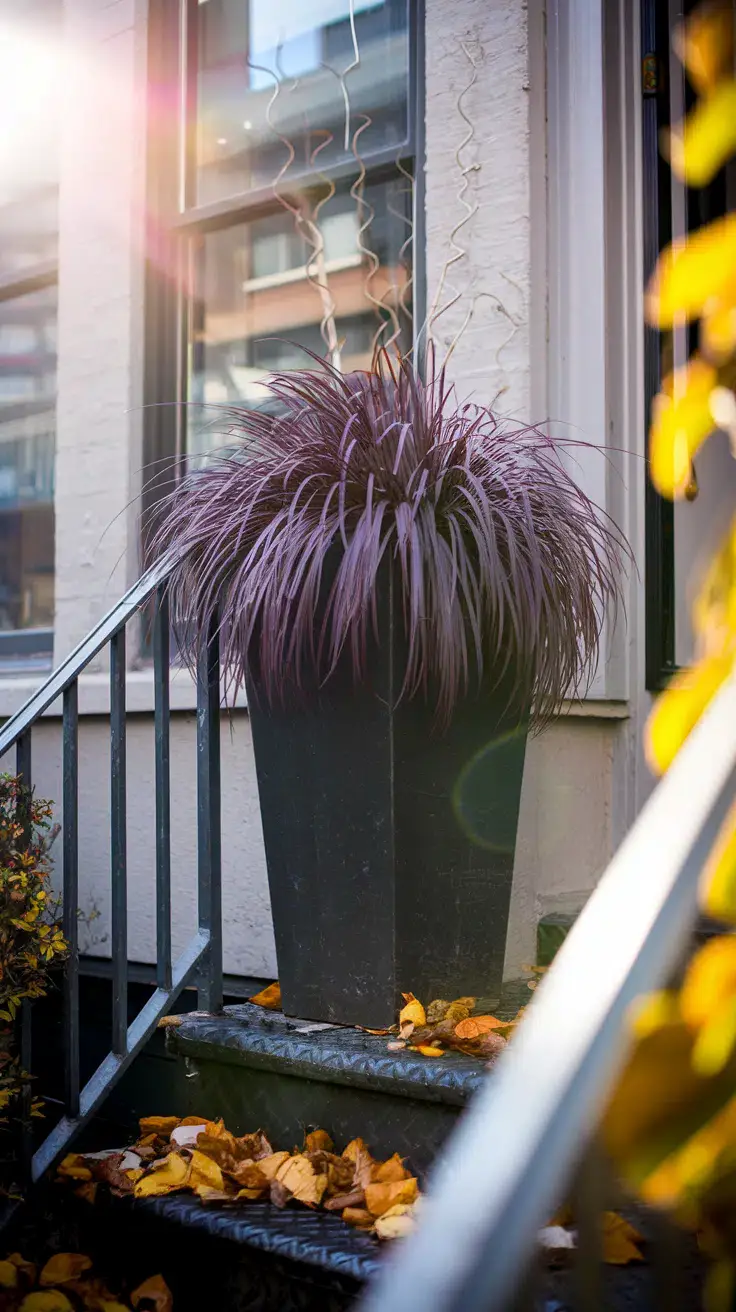
The “Filler” — Fullness and Color
The middle layer of your garden gives it shape and color. Pick strong plants that can grow in cool weather. Plant them around your tallest plants, but make sure to leave a little room for them to grow bigger.
You can choose flowers like mums, which come in lots of colors, or plants like ornamental kale and cabbage for your garden. Asters, pansies, heuchera, celosia, and crotons are great too, with their bright leaves. Pick two or three different kinds, so your garden looks interesting. Repeat some of them to make everything feel connected. For example, putting three mums with two kale plants in between them makes a nice pattern.
To keep your garden looking nice, cut off old flowers from mums and asters. Water the plants near the base, not on top of the flowers, to keep them looking bright. Make sure the soil stays a little wet, but not too soaked.

The “Spiller” — Softness and Cascade
Trailing plants are great for softening the edges of your garden and guiding your eyes down to the steps. You don’t need many; just one or two types will work well. Let them hang gently, but make sure they don’t block the path.
Sweet Potato Vine, with its deep purple or bright green leaves, and Creeping Jenny are strong trailing plants. English Ivy and Dichondra ‘Silver Falls’ are also good choices. Dark purple looks nice with pale kale. Bright green next to burgundy mums really stands out. Silver leaves can make warm colors look cooler.
If the stems grow too long and take over, pinch them back. Keep the vines away from the path so it’s easy to walk. Turn the pot once in a while so the plant grows evenly.

Exploring Autumn Colors: Perfecting Hue and Texture Blends
Before anyone comes to your door, colors tell their own story. Choose fall colors that look nice with your house and the sunlight outside. Let textures bring feeling to the scene. Use different shades so every part catches the eye.
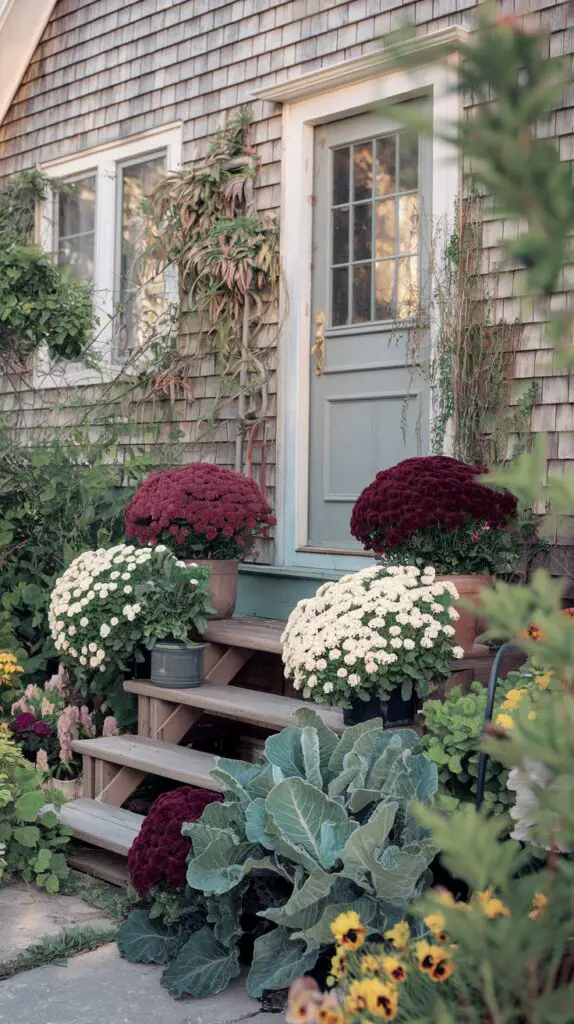
Beyond Orange
Pumpkins are cool, but your pots can also show off different colors. Stick to just a few colors so everything feels nice and put-together. Use three main colors and one extra for a pop. Mix up the leaf shapes to keep things interesting.
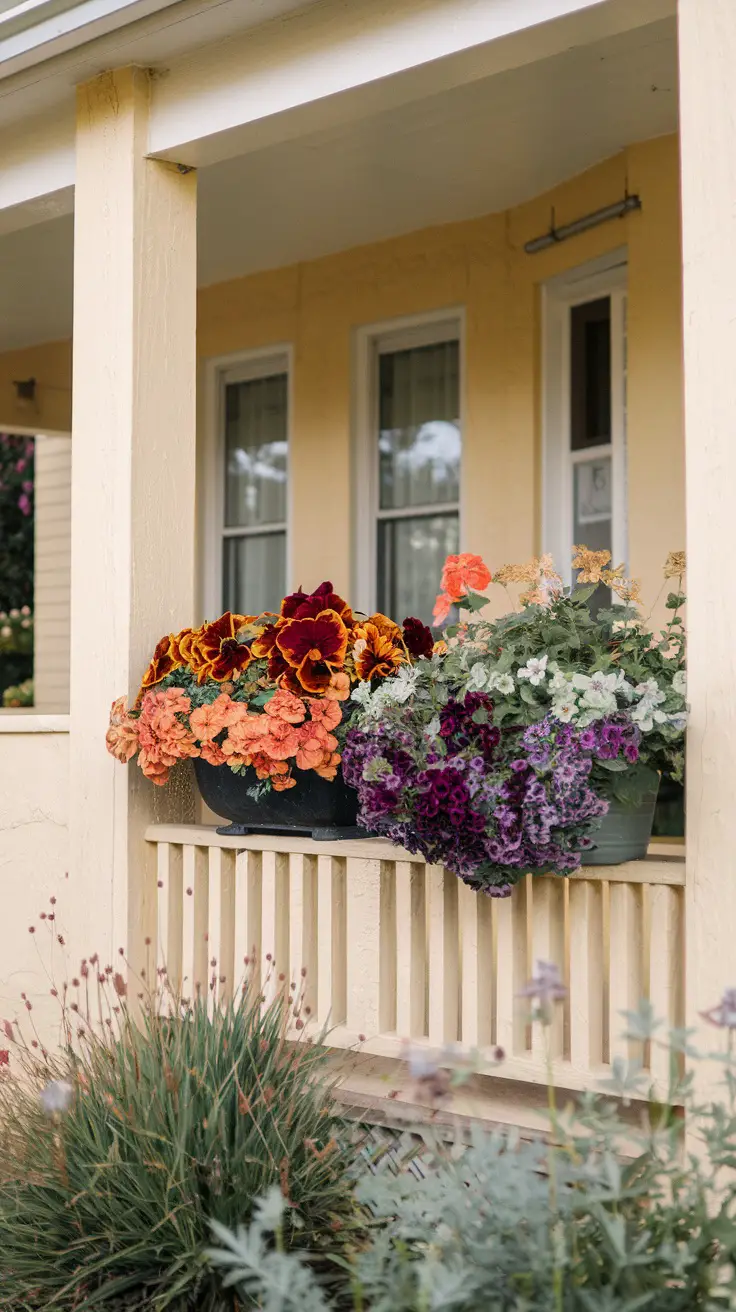
The Classic Harvest
Pick warm and rich colors. Think of deep reds, rusty copper, and bright yellow. Choose:
- Bronze or rust mums
- Asters in red-purple
- Ornamental peppers in sunset shades
- Blue-green ornamental cabbage for cool balance
- Fountain grass for height
A warm metal mat or a lantern can help make everything match nicely.
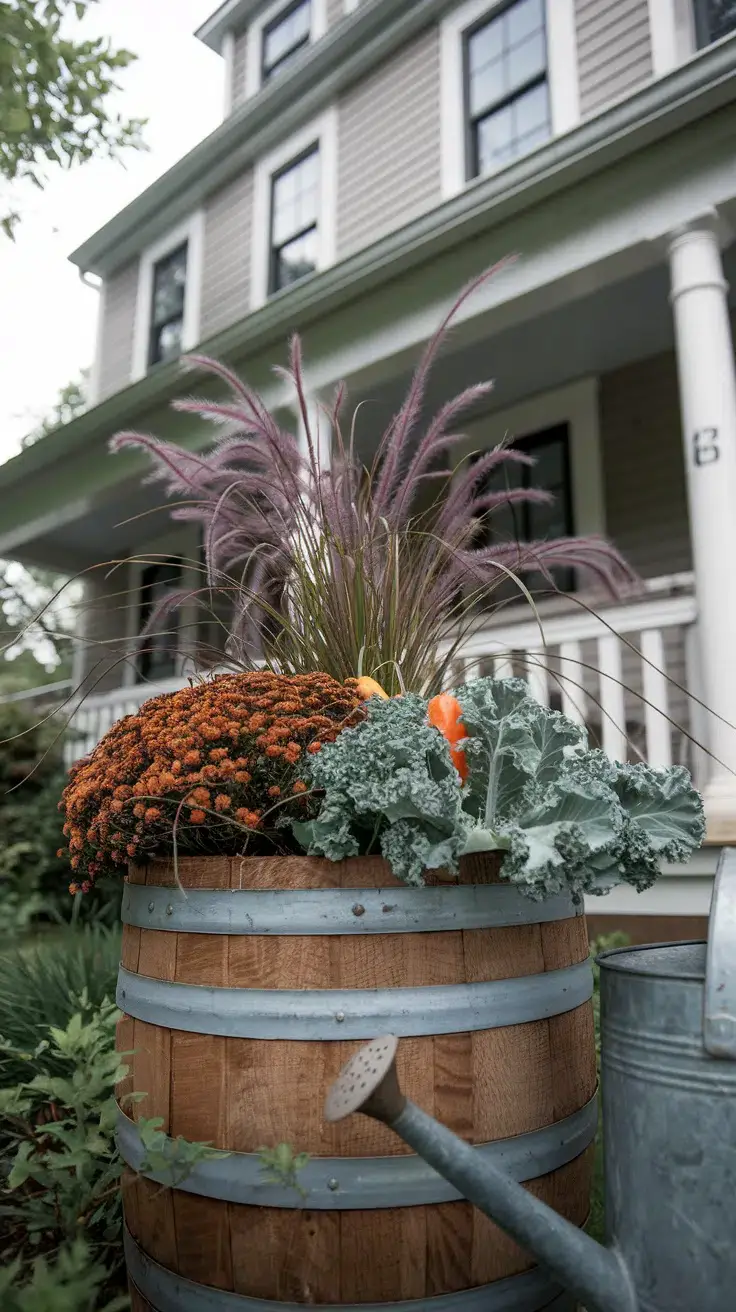
The Moody Jewel-Tone
Go for a look that’s bold but quiet. Use colors like dark plum, deep red, rich purple, and dark green. Add some silver or gold for a little sparkle.
- Heuchera in blackberry or merlot shades
- Dark purple asters
- Burgundy mums or celosia
- Dichondra ‘Silver Falls’ for cool sheen
- Small gold gourds as accents
Keep the bright orange under control so the colors look fancy and nice.
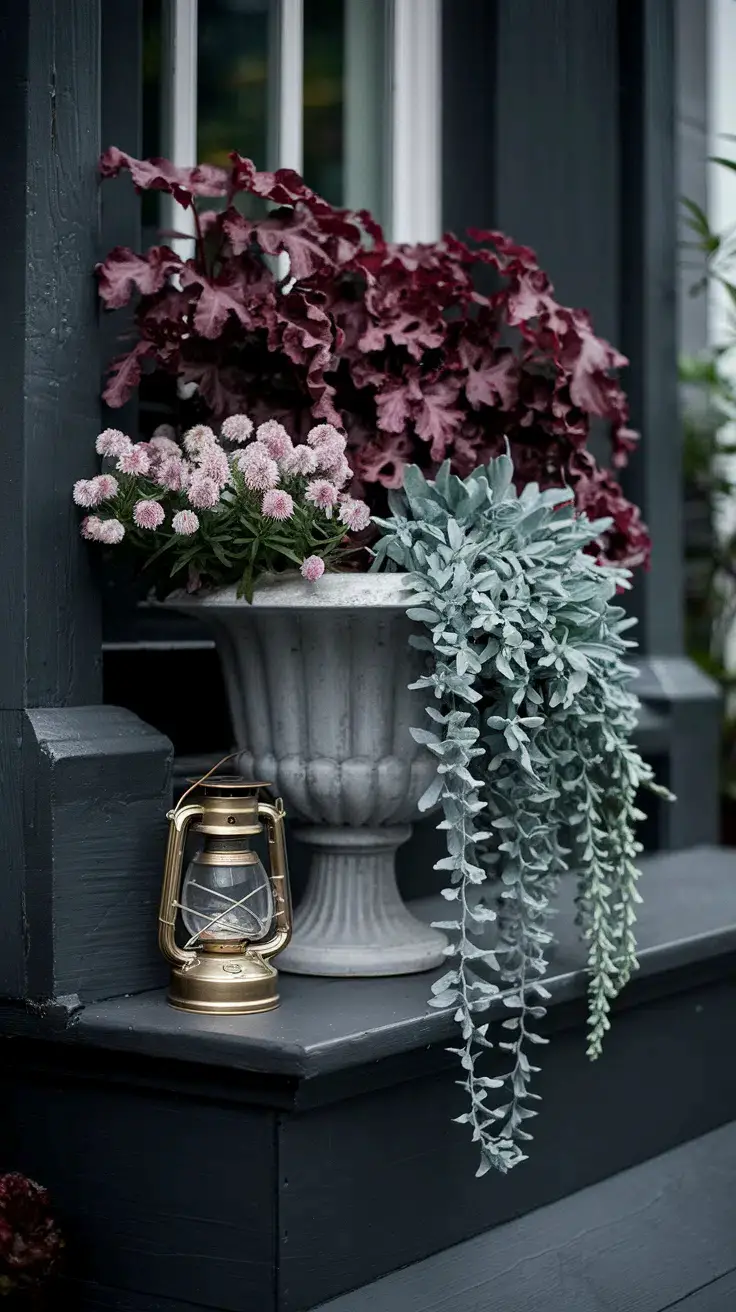
The Rustic Farmhouse
Make it gentle and soft. Use colors like cream, white, light green, and soft blue. Let leaves and shapes guide you.
- White mums or pansies
- Ornamental kale in blue tones
- Lamb’s ear for softness
- Feather reed grass for structure
- Pinecones or birch branches for texture
Wooden planters blend in perfectly.

Texture Is the New Bloom
The weather gets colder. Flowers don’t last as long. But the feel stays the same. Sharp things sit beside soft things. Shiny things near dull ones. Smooth touches rough. This mix makes things interesting, even when the sky is gray.
- Pair grass blades with cushiony mums
- Ruffled kale beside trailing ivy
- Smooth gourds with flaky bark
- Soft lamb’s ear near shiny croton leaves
- Seed heads with pansy faces
Small differences stand out when you’re close to a doorstep.

Creating Contrast
Start with one main texture, like spiky leaves, then add something soft, like ruffles. If you have shiny leaves, mix in some fuzzy or silvery ones. Use each texture two times so it looks like you planned it. Make sure some parts are busy and some are calm so your eyes can rest.

Choosing Plants for Any Porch: Options for Full Sun and Shade
Where you put things is really important. The sun, wind, and roofs can change how plants grow. First, learn if your spot is mostly sunny or shady. Then choose plants that like that kind of light. Pots next to walls might get thirsty quicker, and wind can make tall plants wobbly. Thinking ahead a little can save you time and money.
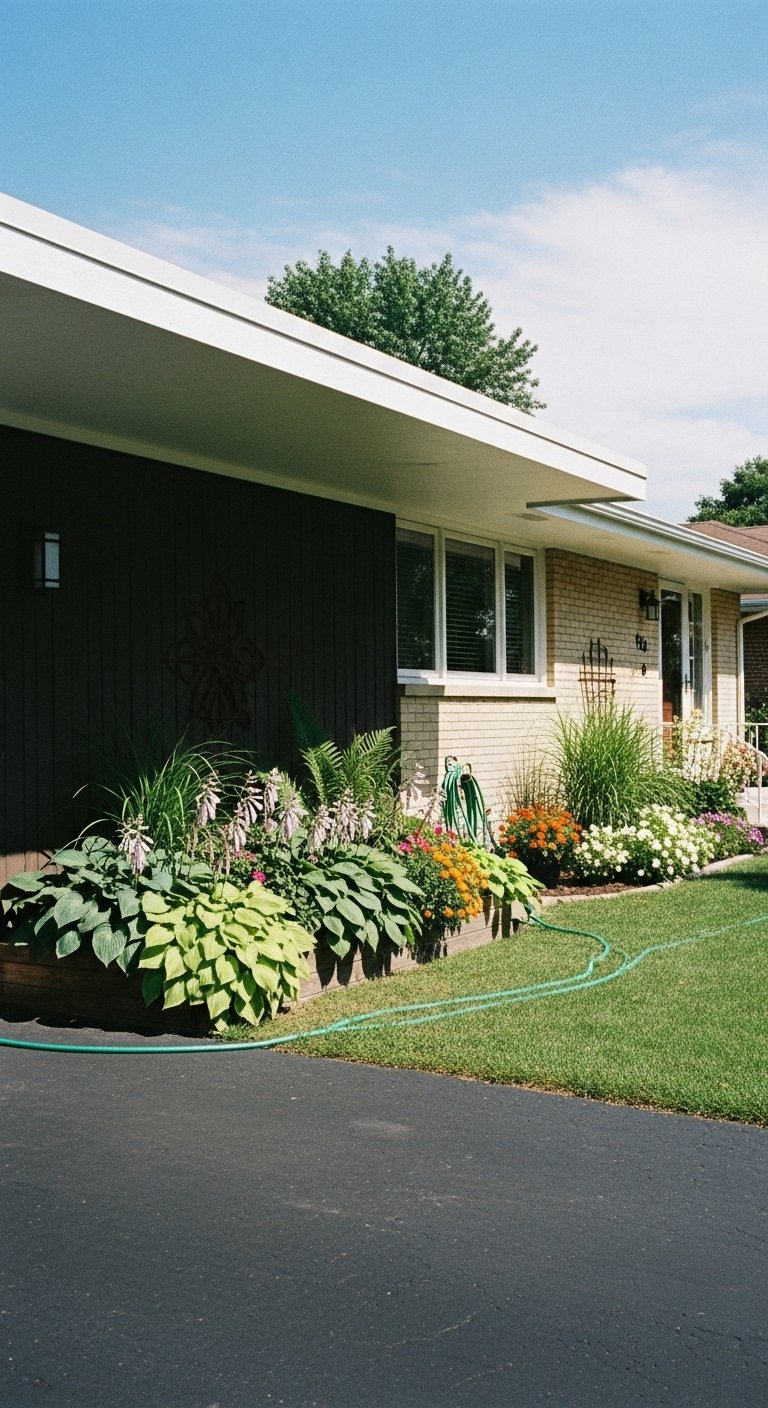
The Key to Success Is Location
Check how many hours the sun shines right on your porch. If you have a roof that sticks out, it might block some sunlight, even if your house faces the south. Shiny surfaces like brick can make it hotter. Windy areas near alleys might knock over tall plants, so tie them if they need help. Put pots close so they can keep each other moist. Bigger pots keep the soil wet longer.
For Sun-Drenched Porch Spots (Full Sun)
Plants need lots of sunlight, at least six hours, to grow well. Pick those that like it warm and bright.
- Mums in jewel or white tones
- Asters for late color
- Ornamental peppers for fruit and shine
- Sedum ‘Autumn Joy’ for sturdy blooms
- Purple Fountain Grass or ‘Karl Foerster’
- Pansies for cool nights
- Ornamental kale for strong color as temps drop
Notice how long the sun shines on your porch. Even if your house faces south, a roof could block some sunlight. Brick walls can get really warm. If it’s windy, tall plants might fall over, so tie them up if needed. Place pots together so they keep each other damp. Big pots help the soil stay wet for longer. Plants need lots of sunlight, around six hours, to grow well, so choose ones that enjoy warmth and brightness.
- Water deeply, then allow the top inch to dry slightly.
- Morning sun with afternoon shade reduces stress where heat is intense.
- Deadhead mums and asters to keep a fresh look.
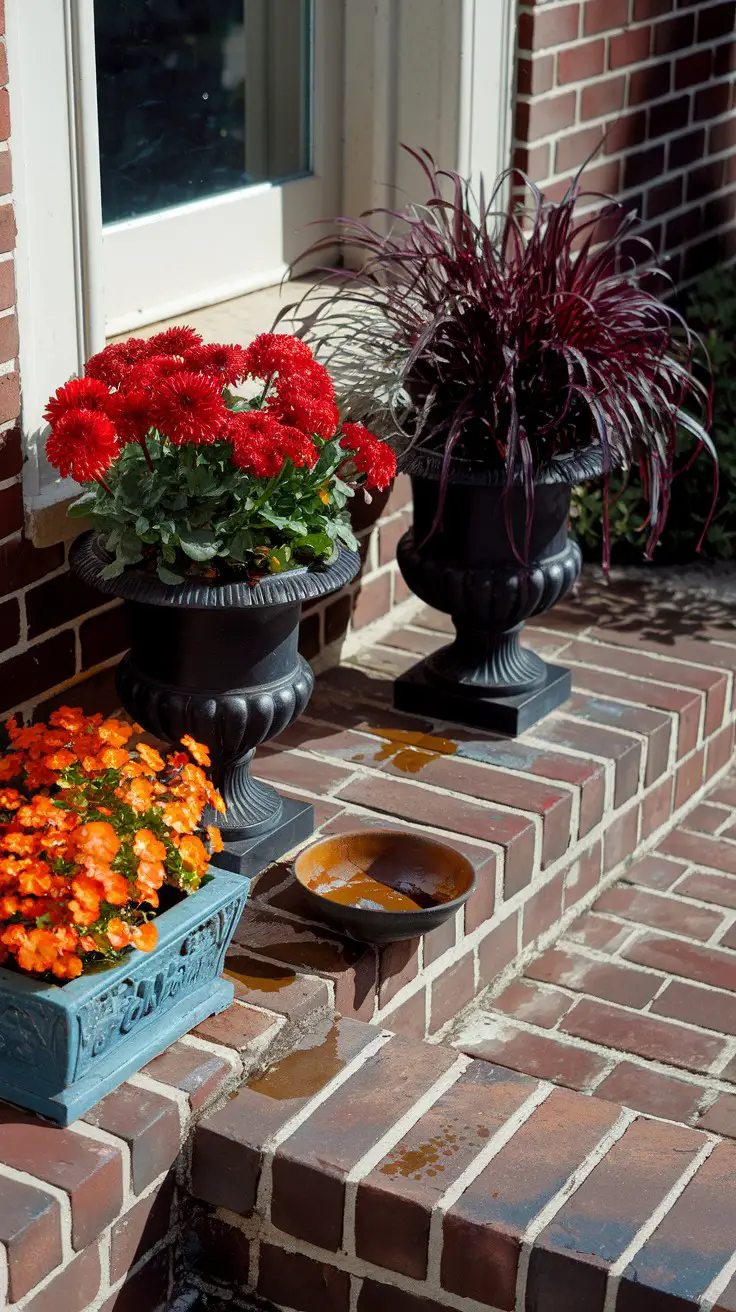
For Covered & Shady Porch Spots (Shade)
Look for leafy plants that don’t need a lot of sun. They do well with less than four hours of direct sunlight, like the kind you get in the morning or through some shade.
- Heuchera (Coral Bells) for color-rich leaves
- Autumn fern for airy fronds
- Coleus for bold patterns
- Lamium (Dead Nettle) for silver leaves
- English ivy for trailing
- Torenia (Wishbone Flower) for pops of bloom
- Hosta in big containers where space allows
Notice how long the sun shines on your porch because even if your house gets lots of sunlight, sometimes a roof or wall can block it. If it’s windy, big plants might fall over, so you might need to tie them up for safety. If you put plant pots close together, they help each other stay damp, and bigger pots hold water longer to help plants grow. Choose plants that love sun, about six hours a day is great. But if there’s less sun, like in the morning or with some shade, pick leafy plants that don’t need much sunshine.
- Use lighter-toned foliage to brighten dim corners.
- Keep soil slightly moist; shade spots still dry faster in wind.
- Rotate pots so growth stays even.
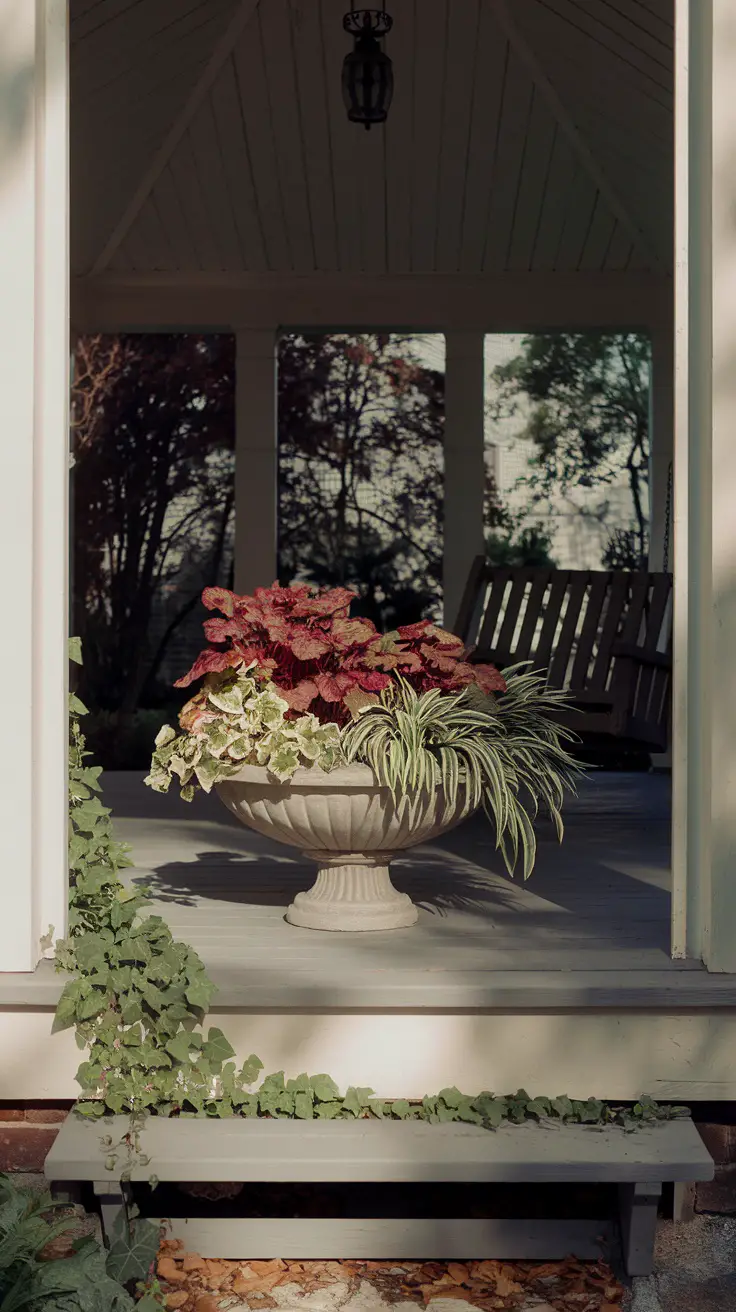
A Note on Watering
Sometimes the cool air can make you think your plants need less water, but their pots can still dry out fast, especially if it’s sunny or windy. To see if they need water, stick your finger in the soil about two inches deep. If it feels dry, it’s time to water. It’s best to water in the morning so the leaves dry faster during the day. You can put some mulch on top of the soil to help keep the water from going away too quickly. And if you use a dish under your pot, make sure to get rid of any standing water after it rains.
Front Porch Fall Planters with Fake Plants & Natural Decor
Hectic days or not enough sun? You can still make your porch look great for fall. Fake plants that look real can be your secret. These fake stems work well if you’re looking for easy ideas that don’t need care. Pick ones that look almost like the real thing from a distance, not the shiny kind. Mix them with real things to make it all look natural.
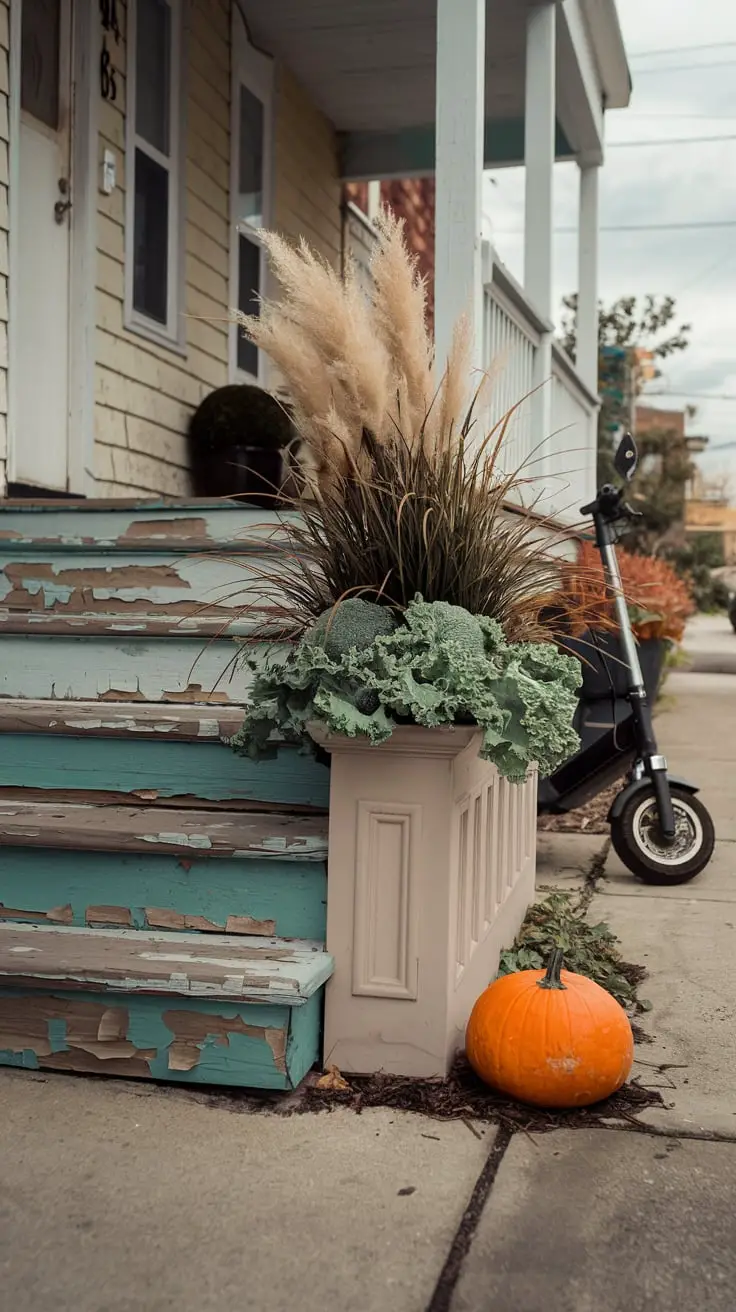
The Zero-Maintenance Option: Leveraging Faux Greenery
Good fake plants can stay strong even if it’s dark, windy, or if you’re away. They last for many seasons. You can bend their stems how you like and stick them in firm foam inside the pot. Put bark, moss, or a little real soil on top to make it look more real. You can still add a real plant or two for a nice smell and a bit of life.

Best Bets for Faux
Even cheaper plants can look real sometimes. But not all of them do. Pick the ones that aren’t shiny and have gentle colors.
- Faux ferns for shade corners
- Artificial grasses with varied blade widths
- Autumn leaf stems in russet and burgundy
- Faux berries in deep red or amber (use sparingly)
- Branches like curly willow or birch twigs
Don’t choose shiny ivy or pumpkins that look obviously fake. Mix in some real things to make it all look more natural.
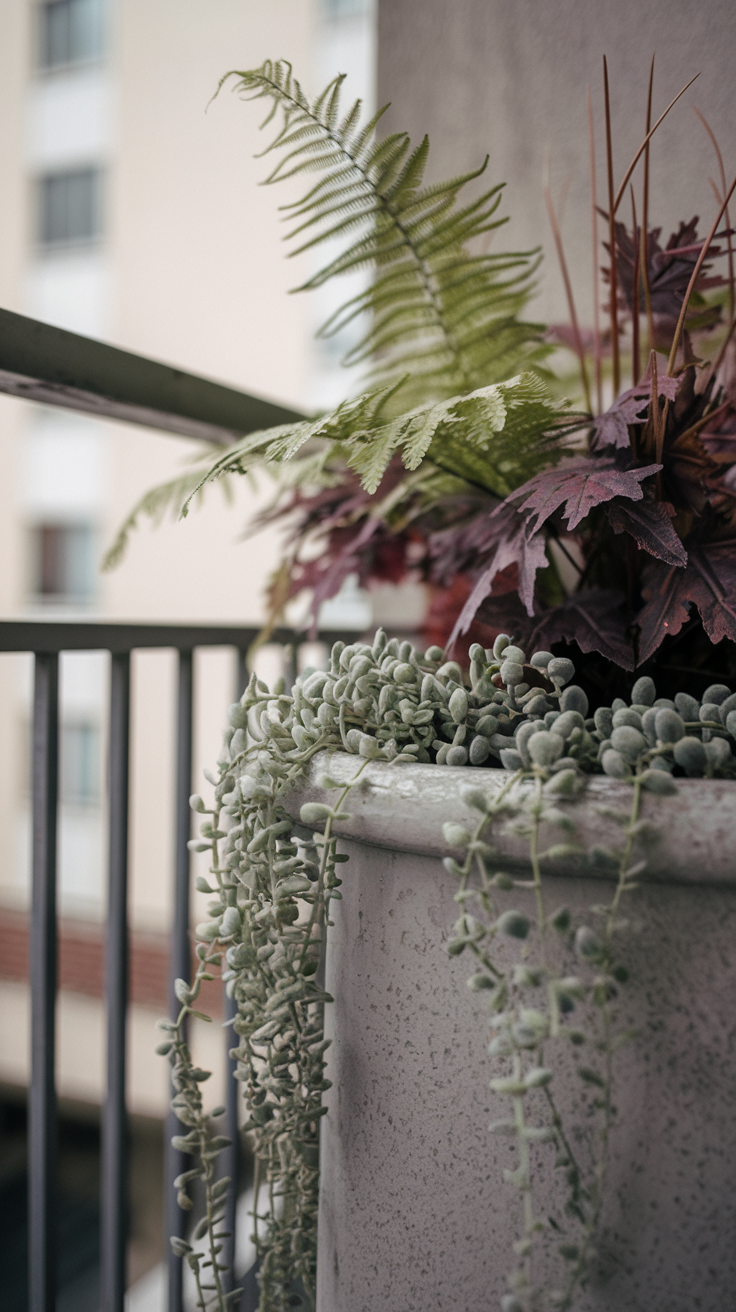
The “DIY” Decor Touch: Found & Foraged Elements
Add a touch of nature with things you can find or buy cheaply. Use sticks, pine cones, and seasonal fruits. Talk about decorating your porch for fall to give people ideas. Being creative yourself can save money and make it special.
- Mini pumpkins and gourds set on the soil
- Pinecones tucked into gaps
- Birch logs or driftwood for vertical interest
- Dried corn cobs or husks
- Lotus pods or seed heads from your beds
- Cinnamon bundles tied with twine
Secure the heavier things by pushing flower sticks or bamboo rods into the dirt. Make sure the path is clear so everyone can walk safely.
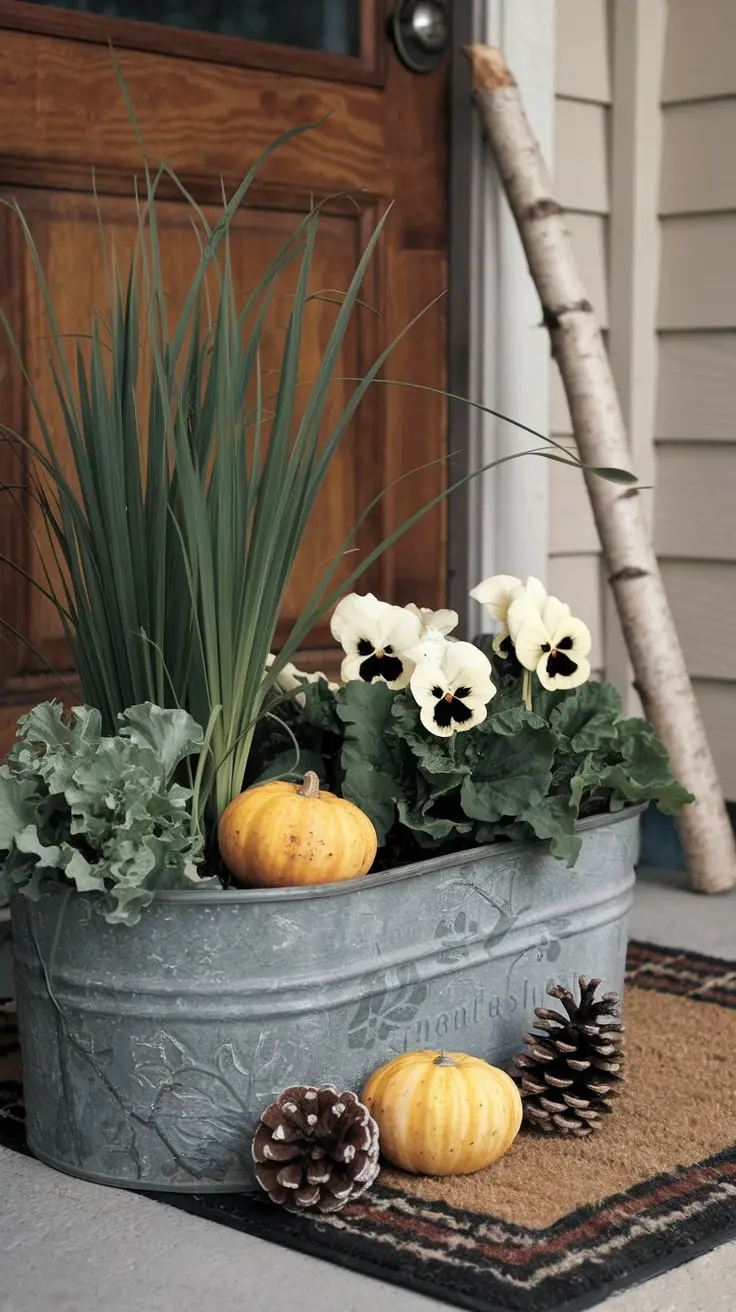
Styling Tip: Make It Last
Think about adding or taking things away as the months change. For October, place some pumpkins out, then take them away when it’s time to water. Keep the dried bits longer, even when it gets cold. Swap fake flowers with real ones when needed. And sprinkle some new dirt on top from time to time to keep everything looking nice.
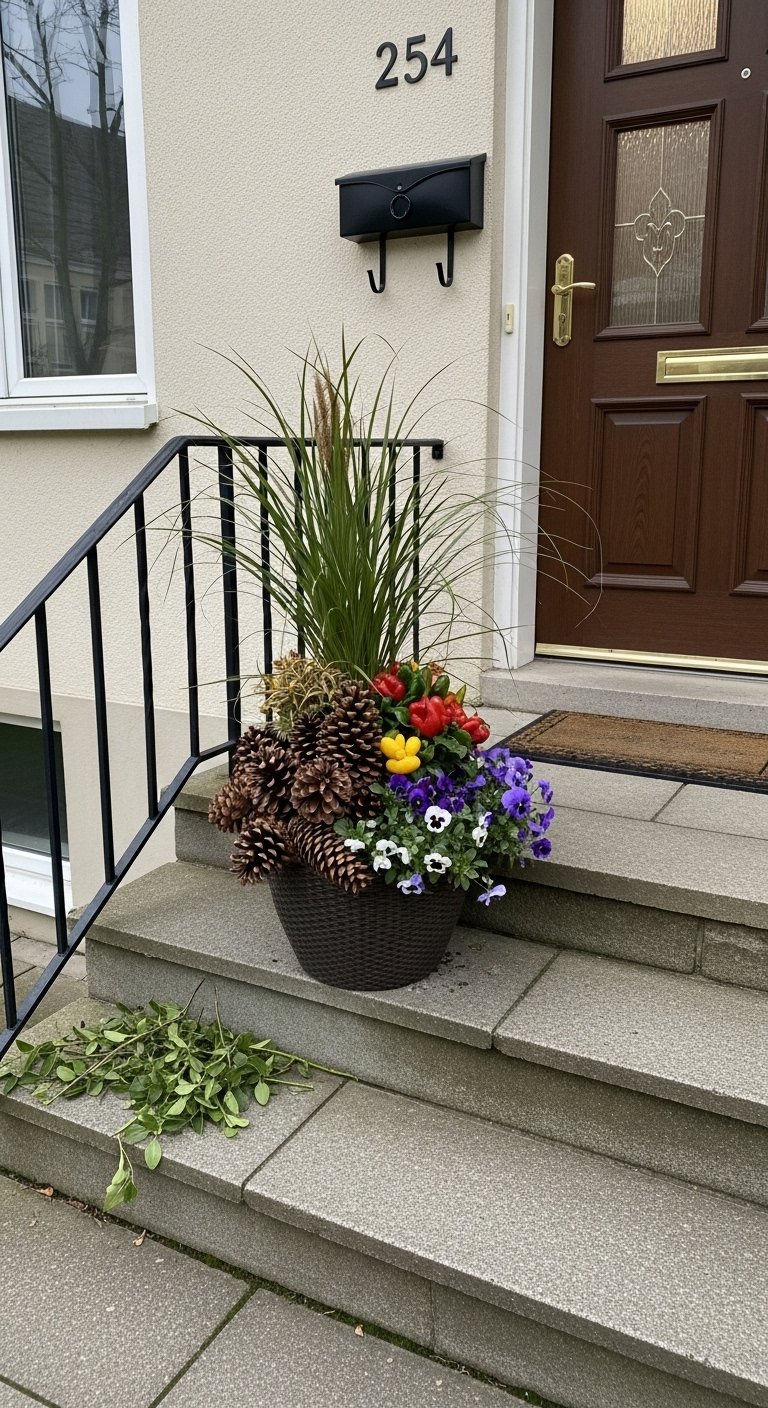
Fall Planter Styling Ideas for an Elegant Front Porch Entrance
The final touches make everything look perfect. Little choices by the door are important. When it all comes together, it feels calm, cozy, and inviting.
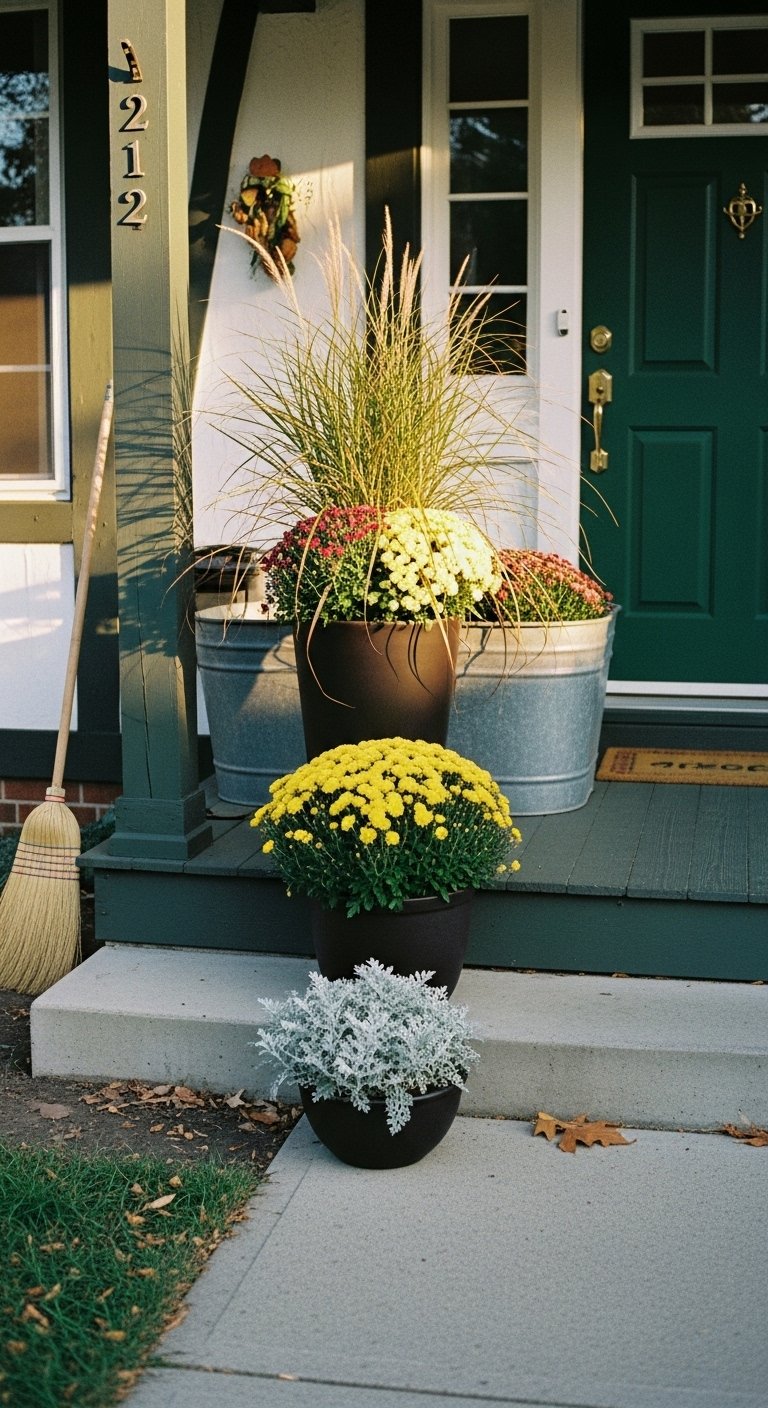
Creating a Cohesive Scene
Use the same colors and feel. If the leaves are pointy, find other pointy things. Put a shiny lantern by a shiny pot so they look nice together. Make sure the metal on the house number and the door look the same. Add something soft, like a mat. Leave room for everything to feel calm.
- Pick one main hue, one support, and one accent.
- Repeat each at least twice on the porch.
- Keep walking paths clear and safe.
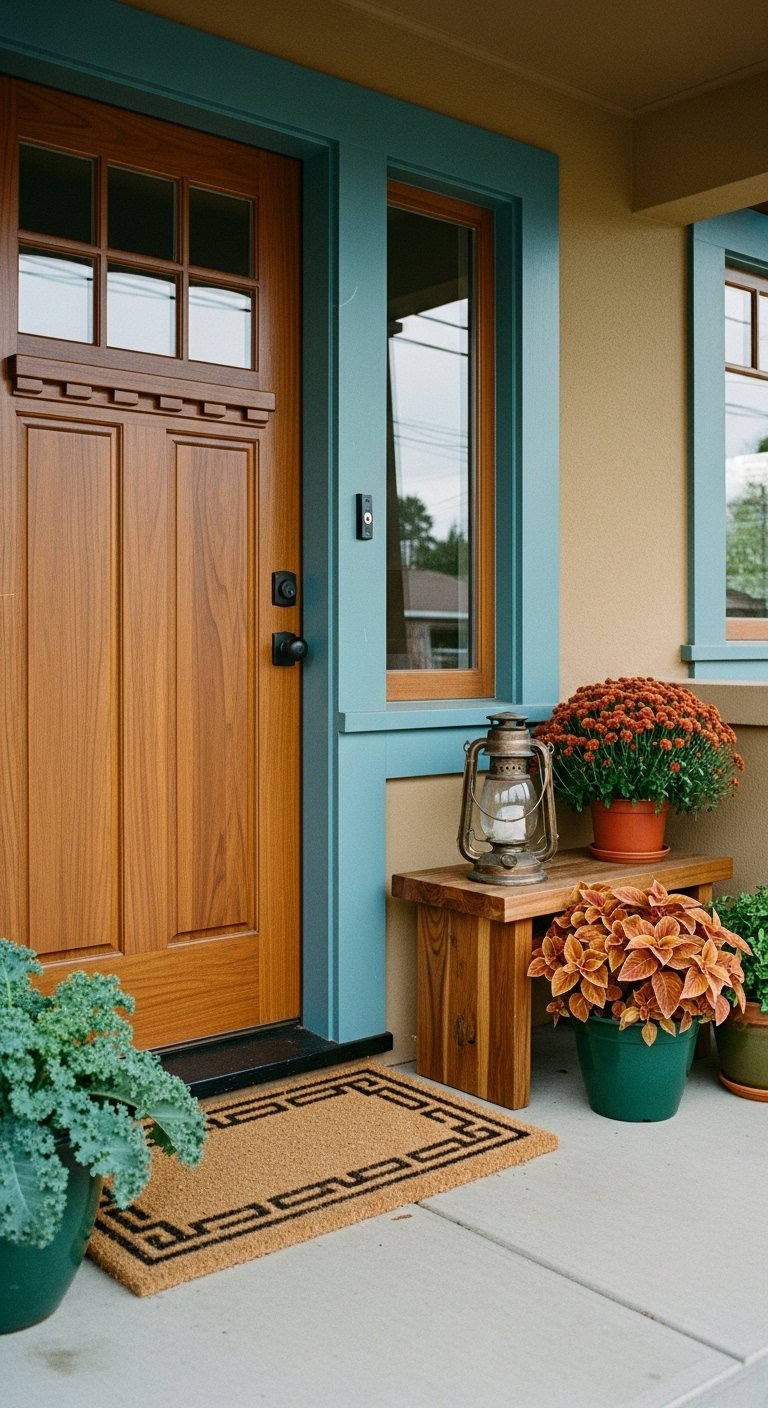
Symmetry and Asymmetry
Both ways look nice. When both sides match, like twins, it feels fancy. Two same flower pots by the door look smart. When sides are different, it feels cool and chill. A big pot with a little friend and a light looks comfy. Let your house show the way. Straight parts and middle doors like pairs. Off-center doors and small paths like groups.
- Even numbers read classic.
- Odd numbers feel casual and fresh.
- Keep the visual weight balanced, not equal.

Play with Scale
Consider using different heights. Having items of various heights adds interest. Try one tall, one medium, and one short item together. Put the tallest one by the door or at the back. Arrange them so they get smaller toward the path. Big pots keep water longer and look good by tall walls. Small pots work well on stairs or railings.
- Aim for your tallest planted element to be about half your door height or a bit less.
- Keep paths at least 30 inches clear.
- Use plant stands or overturned crates to lift shorter pots.
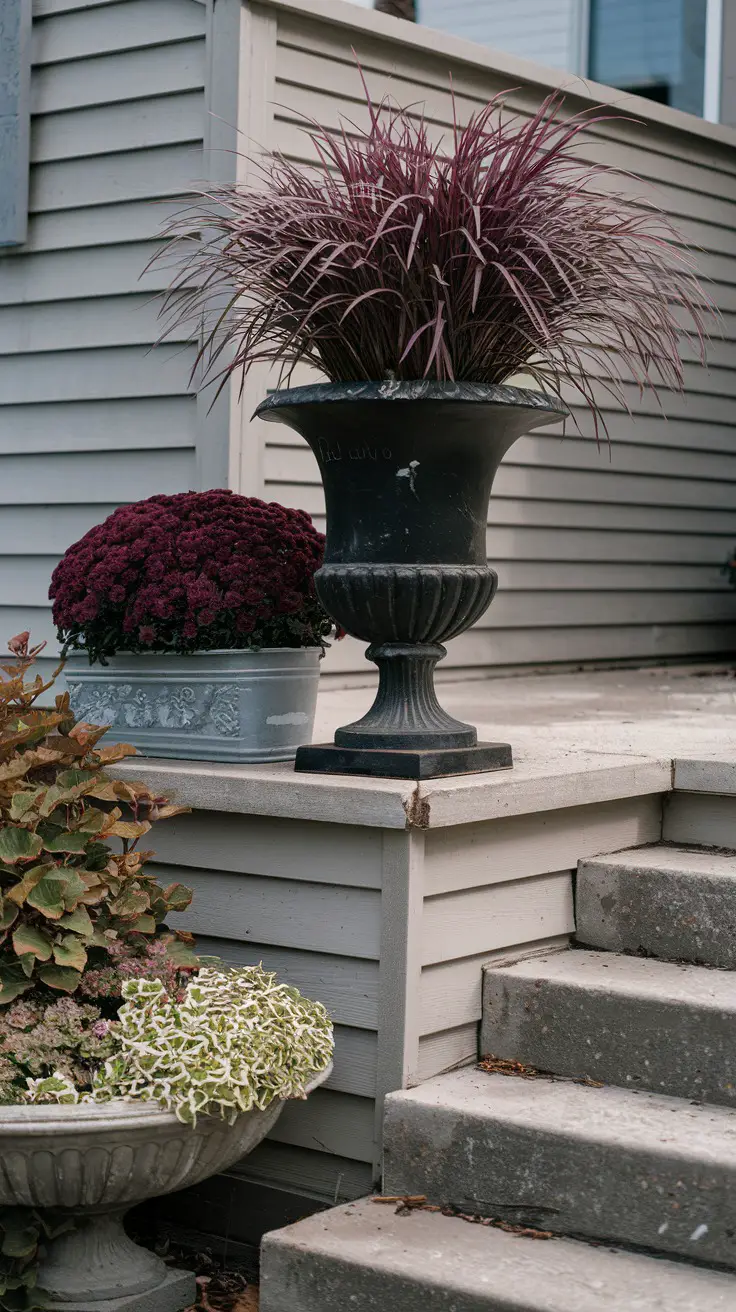
Lighting Your Creation
Soft light makes things feel special. A little solar light can gently shine on grass or your planter. Warm fairy lights can twinkle through the plants softly. Pick warm white colors, not cold blue ones. Use timers to keep them steady. Hide wires and stakes in the leaves. Make sure lights don’t shine into neighbors’ windows or the street.
- 20–40 lumens is plenty for accents.
- Test at dusk, then adjust.
- Keep lights off dry leaves during windy nights.

Harmonize with Your Home
Make your planters fit your house’s style. If your door is black, try plants with silver leaves and white flowers. A red door goes well with sage and purple colors. Wood doors look nice with rust and cream shades. Use the colors of your shutters in your flowers or plants like kale. Match the metals from your mailbox or light with your planters. Add a wreath that shares the same color or feel of one of your plants for easy fall decorations.
- Choose pot finishes that link to trim or railings.
- Keep one repeating plant across both sides of the door.
- Let your door color guide one accent choice.
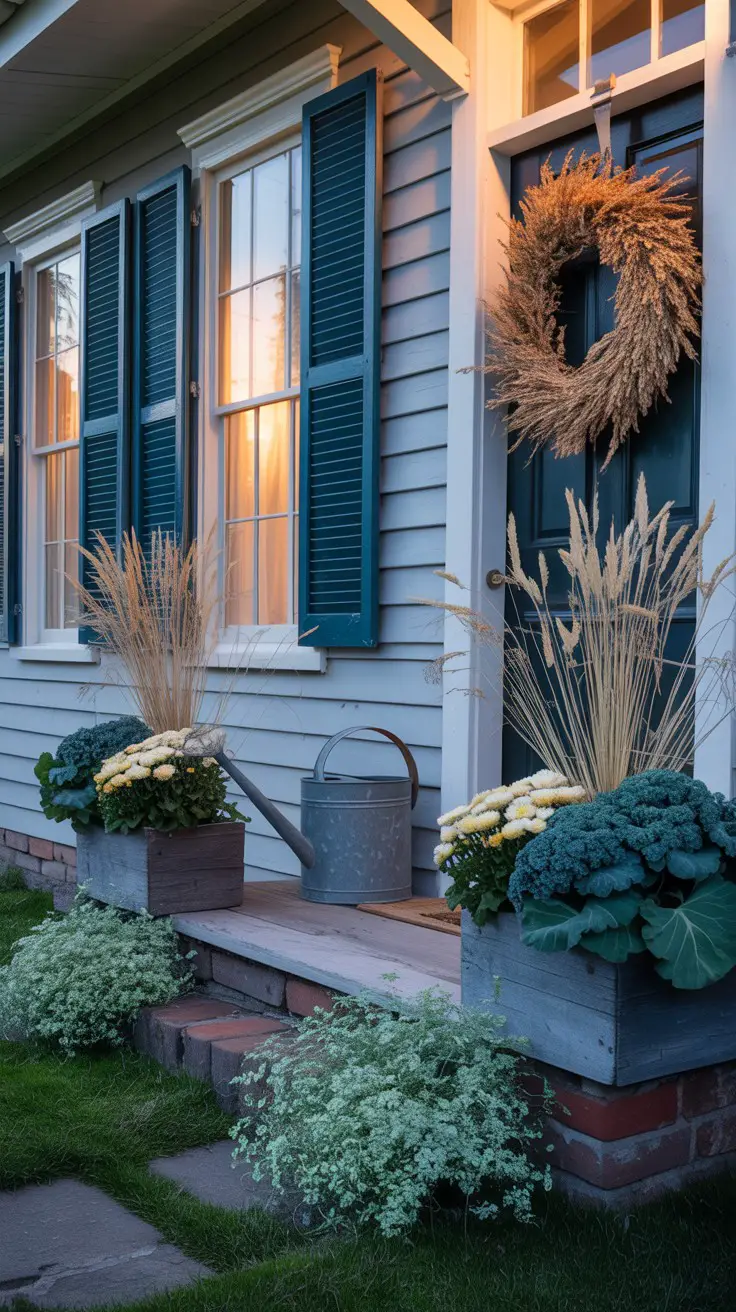
Your Autumn Welcome Awaits
You have everything you need. With a good plan, plain pots can become a friendly welcome. Your porch can feel unique, not just like everyone else’s.
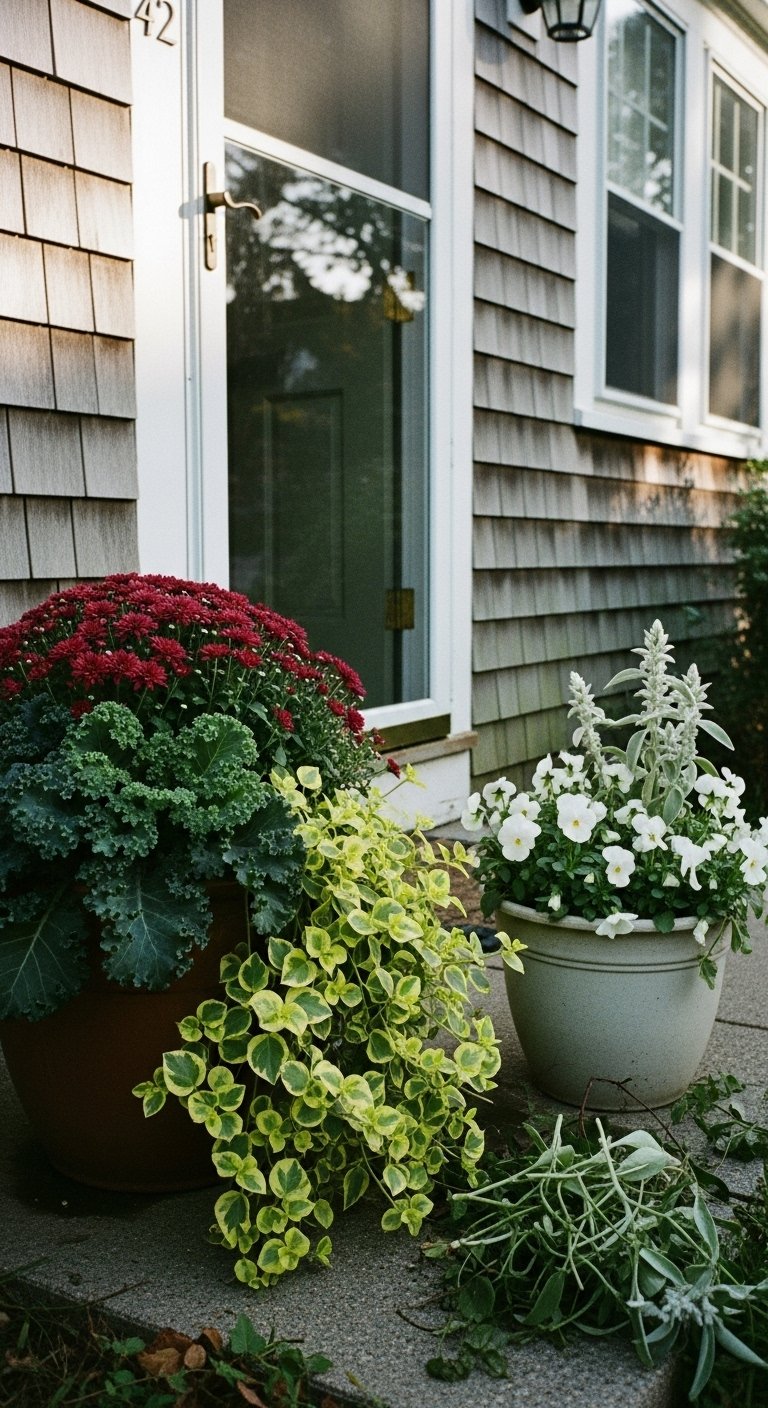
Key Takeaways
- Start with the fall ethos: harvest, warmth, and sturdy beauty that lasts.
- Use the triangle method: tall thriller, rounded filler, trailing spiller.
- Build a tight color story. Let texture do the heavy lifting.
- Match sun lovers to bright spots and shade stars to covered areas.
- Mix real plants with good faux and simple found bits for easy charm.
- Style the entry with balance, symmetry or asymmetry, smart scale, gentle light, and harmony with the house.

Start the Process
Choose your colors tonight. Find a tall plant, two bushy ones, and one that hangs down. Add a branch, pinecone, or pumpkin for fun. Put your pots where the light is best. Water them well. Adjust them a little every week. Enjoy the moment at your door every day. Guests will notice it too.

